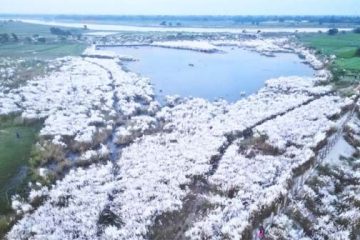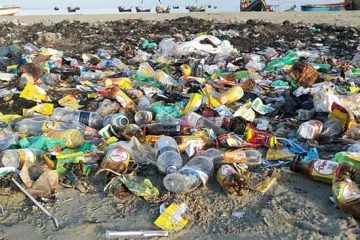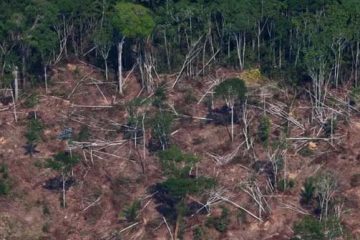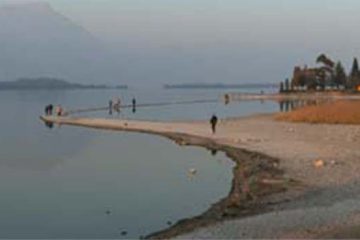Sourav Mahmud
 Sonadia Island is one of the biodiversity hotspot of Bangladesh. In 1995, the Government of Bangladesh included a provision for the declaration of Ecologically Critical Area (ECA) in the Bangladesh Environment Conservation Act. Twelve sites are classified as ECAs and guidelines exist to control further damage to these areas. Sonadia is considered ecologically important by the government and in 1999 was declared as an ECA under Environmental Act of 1995.
Sonadia Island is one of the biodiversity hotspot of Bangladesh. In 1995, the Government of Bangladesh included a provision for the declaration of Ecologically Critical Area (ECA) in the Bangladesh Environment Conservation Act. Twelve sites are classified as ECAs and guidelines exist to control further damage to these areas. Sonadia is considered ecologically important by the government and in 1999 was declared as an ECA under Environmental Act of 1995.
Sonadia Island is located on the south-east corner of Bangladesh. The island is unique for wintering shorebirds specially the globally critically endangered Spoon-bill sandpiper, one of the rarest migratory birds in the world, with a population of just 300-350 pairs left in the wild (Zöckler, 2006). Lying within the East Asian-Australasian Flyway, Sonadia is used by migratory birds as a stopover during their long migration further south.
The island provides breeding areas for four globally threatened species of marine turtles, and serves as a significant bird refuge for over 80 migratory species. In addition, its inshore waters are feeding grounds for a number of globally threatened marine mammals, such as the Irrawaddy and Bottlenose dolphins. Sonadia Island supports the last remnants of special mangrove forests, which once stretched along most of the coastline of Chittagong and Cox’s Bazar. These mangrove species are different from those found in the Sundarbans and can tolerate higher levels of salinity. The island supports a large number of marine turtles, water birds, mollusks and echinoderms.
The government is considering to establish a deep water sea-port at Sonadia island and a coal-based thermal power plant at Hoanok Union near Sonadia Island, Moheshkhali, in Cox’s Bazar. Bangladesh Government also going to establish another two more coal based thermal power plants to be constructed at Anwara of Chittagong near Karnophuly off-take and Rampal of Bagerhat along the Pasur river about 4 km distance from Sundarbans buffer zone.
The coal-based thermal power plant in an area adjacent to the Sundarbans would harm the forest’s unique characteristics. The construction of the shipyard and silo inside the Sundarbans would lead to felling of trees and extinction of wildlife. And it is also the same threat for Sonadia’s ecosystem.
When the nation was one to protect the Sundarbans and its biodiversity, an initiative had been taken to build a thermal power plant, based on coal imported from India, with a capacity of 1,320 megawatt in the super critical area of the forest. If coal is burnt to generate power, a large quantity of sulphur dioxide, nitrous oxide, carbon monoxide, carbon dioxide and chlorofluoro-carbon would spread in the air, causing a great measure of environmental degradation, including acid rain, in the area. It is our responsibility to preserve the Sundarbans.
Sonadia island has formed as a barrier island just south-west of Moheshkhali Island. Natural sandy break waters face parallel to the flat coastlines of Moheshkhali. To the east a small channel separates the two islands while to the southeast shallow bays separate it by 3.5 km from the mainland Cox’s Bazar. ý The beach is rich in mollusk shells. The beaches and shallow shoals surrounding the site provide an excellent staging area and wintering ground for migratory waterfowl and shorebirds, and the sand dunes provide nesting grounds for marine turtles. The sandy shore is the last remaining habitat for numerous red crabs. The largest undisturbed salt marsh area is in the south of Sonadia Island; other areas are along the mangrove formations north of Sonadia West village, between Moheshkhali and Sonadia Islands, and along the mangrove formations of Baradia-Vanga canal in Moheshkhali.
The mangroves of the site have developed in a lagoonal coastal setting and also a deltaic formation, with salt-tolerant dominant species attributed to the extreme ecological factors of high salt-content soil and water and it is total 500 ha. The mangroves provide an excellent wintering ground for migratory waterfowl, shorebirds, and a nursing and feeding ground for fish and shrimp species. The near-shore waters provide important habitat for breeding, growth and development of many inshore and near shore fishes and invertebrate species of the north-eastern part of the Bay of Bengal.
The site’s diverse habitats support three different vegetation types. The vegetation of the sand dunes consists of 35 species of angiosperm, in particular Ipomea pescapre, Vitex trifolia, Clerodendrum inerme, Pandanus odoratissimus and Calotropis gigantia. The salt marsh vegetation consists of Porteresia coarctata and Myristichia wighthenia. The plant population of Porteresia ýcoarctata (Roxb) Tateoka at Sonadia island, a wild grass relative of rice, is internationally important for the development of salt-tolerant varieties of rice. Twenty-seven species of mangrove and mangrove-associated vegetation were recorded in earlier surveys from Sonadia.
About 80 species of migratory waterfowl and shorebirds visit the site for resting, roosting, feeding and wintering, and as a staging ground during migration. These include four bird species that are listed as globally threatened the Spoon-billed Sandpiper, Asian Dowitcher, Nordmann’s Greenshank and River Lapwing. Two fresh-water turtles — the Bengal-eyed turtle (Morenia peterci) and the Indian flap shell turtle are reported from the site. A total of ten species of frogs and one species of toad were recorded from Sonadia.
Previous surveys of the Moheshkhali Channel found 79 species of fish, including 78 bony fish species. The site is very rich in mollusks and crustaceans. Molluskýspecies belonging to 14 genera of bivalves, clams, mussels and oysters are known to occur at the site (Anon., 1990). Crustaceans include various species of portunid crab, Mud Crab and Blue Swimmer Crab. Of particular importance is the Indian Horseshoe Crab or King Crab, which is considered a living fossil and is listed as a threatened species. 19 species of peneaid, solenocerid, sergestid and careidean prawn species have been recorded in a number of surveys of the Moheshkhali channel. The canals and near shore and offshore areas of Sonadia Island support at least four species of globally threatened coastal and marine cetaceans, including Finless porpoise, Irrawaddy dolphin, Bottlenose dolphin, and Indo-Pacific Humpback dolphin (Sousa chinensis). All are listed in the IUCN Red List of Threatened Species. Cetacean species diversity might be greater than recorded so far. The threatened Olive Ridley (Lepidochelys olivacea) and Green turtle (Chelonia mydas) nest at Sonadia island. The nesting site is considered unique in Bangladesh in view of the fact that the beach is pristine, free from tourism and other impacts.
Now a Japanese consultancy firm named Pacific Consultant International (PCI) has conducted a feasibility survey for the construction of the deep-water seaport at the site. The proposed port would have 54 jetties, with a total length of 11 kilometers. The first phase would be completed by 2016 and the full development finished by ý2055. The Jetty will be used for coal unloading and transportation.
So it is a question of the general people and the environmentalists: how a globally important biodiversity hot spot and ECA is going to give way a deep sea port and coal based thermal power plant?
If the two big structures are established in Moheshkhali the total costal ecosystem would be changed and the habitats important for sea turtles, shorebirds and cetaceans will be lost. And it would also wiped out the mangroves and overall marine resources in an area where also hundreds of thousands of community people from the whole of Moheskhali, Kutubdia and even Chittagong depend for their daily livelihood.
It would be a great upcoming human induced disaster destroying our costal ecosystem if four establishments are constructed in south, center and eastern part of the coast along the Bay of Bengal including the world heritage site.
The proposed site (Rampal) for the plants is too close to famous Sundarbans forest and Sonadia Island. The discharge from the power plant, like sulphur dioxide and fly ash, will have disastrous consequences for the fauna and flora of the mangrove swamps as well as the sea shore biodiversity. If excess pressure is put on the Poshur river, it will have a definite negative impact on the forests. A deep sea port at Sonadia Island would destroy the habitat not only of sea turtles, but also shorebirds and other biodiversity related to coastal wetland and marine systems.
PCI selected the Sonadia site in the Cox’s Bazar district, with a second suitable site option (of similar depth) about 20 km north at Kutubdia Island. This alternative site is less important for biodiversity compared to Sonadia island, and would leave a sufficient buffer zone. It is our request to all concerned people, scientists and environmentalists nationally and internationally to advocate for and raise these issues and try to convince the Bangladesh Government to relocate the deep-sea port, coal power plant sites away from biodiversity hotspots like Sundarbans and Sonadia island.
(Article originally published on The Daily Star)
The writer is a biodiversity specialist, nature.sourav@gmail.com





